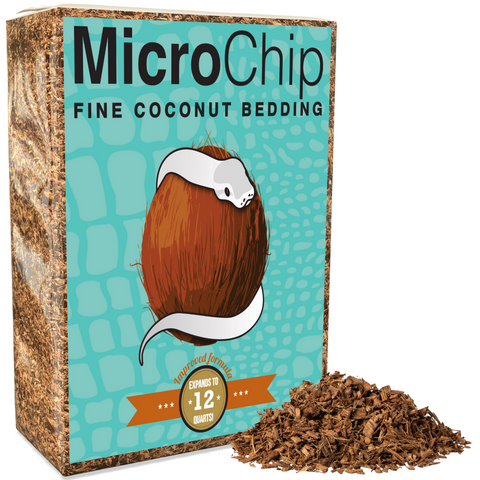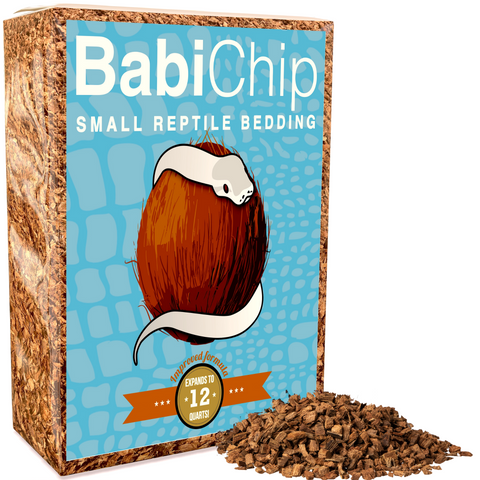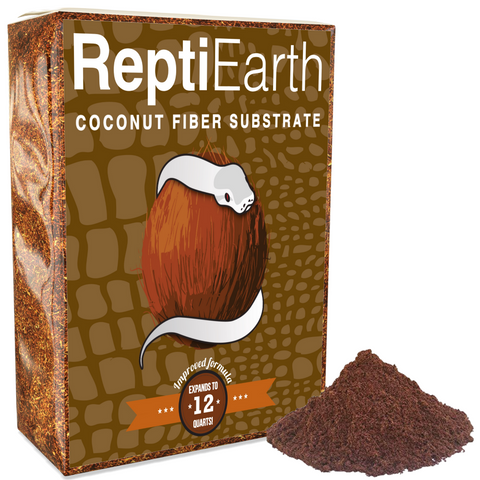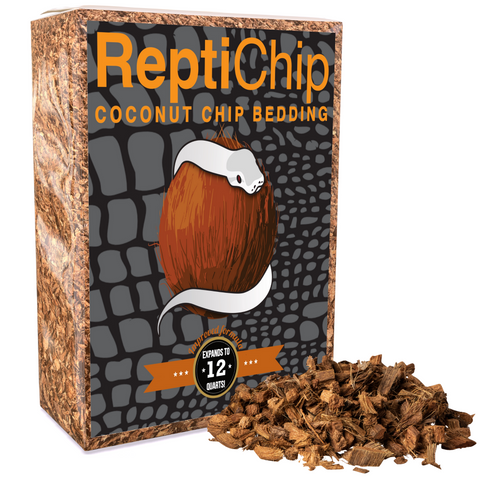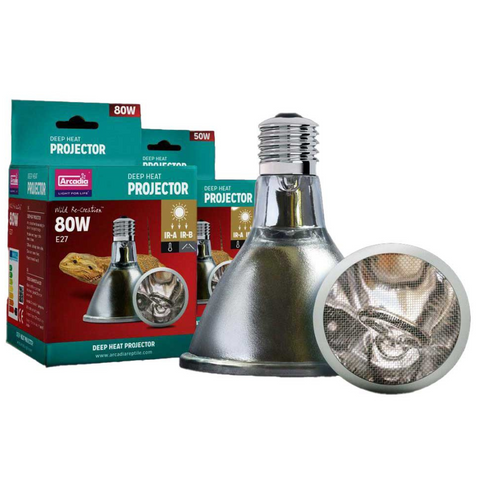Rosy Boa
Lichanura trivirgata
Natural History
The Rosy Boa is a small to medium-sized snake with a slow-growing, long-lived life cycle characteristic of many boid species. Hatchlings typically emerge from the egg at around 10 to 12 inches in length, growing steadily throughout their lives. Juvenile growth rates vary with food availability, temperature, and environmental conditions, but they generally reach adult sizes of 24 to 36 inches within three to five years. Like other boas, they are ovoviviparous, meaning females give birth to live young rather than laying eggs. Litters typically consist of 3 to 10 neonates, which are fully independent at birth and receive no parental care. In the wild, individuals can live for 15 to 20 years, though in captivity, with optimal conditions, lifespans exceeding 25 years have been documented.
This species exhibits a primarily nocturnal or crepuscular activity pattern, though seasonal and environmental factors can influence its behavior. In the cooler months, it may exhibit increased diurnal activity to bask and regulate body temperature, while in hotter conditions, it remains hidden during the day to avoid desiccation and overheating. The Rosy Boa is a highly secretive, slow-moving snake that primarily relies on ambush or opportunistic hunting strategies. It preys predominantly on small mammals, particularly rodents, but will also consume birds, lizards, and occasionally amphibians if encountered. When hunting, it relies on its strong constricting abilities, coiling tightly around prey and gradually increasing pressure until the animal succumbs. Unlike aggressive or highly defensive species, this snake tends to avoid confrontation by remaining motionless or retreating when threatened. If provoked, it may engage in a defensive behavior known as "balling up," where it tightly coils its body with its head concealed beneath its coils, reducing its exposure to predators.
In its natural habitat, the Rosy Boa plays a crucial role in the ecosystem. As a predator, it helps regulate rodent populations, which in turn prevents overgrazing and potential crop damage. It occupies a mid-level position in the food chain, preying on smaller vertebrates while also serving as a food source for larger predators such as raptors, carnivorous mammals, and larger snake species. One of its most remarkable adaptations is its ability to withstand extreme environmental conditions by utilizing rock crevices, burrows, and dense vegetation for shelter, allowing it to conserve moisture and escape extreme temperatures. This behavior ensures its survival in arid and semi-arid regions, where water is scarce, and temperatures fluctuate dramatically between day and night. By maintaining a balance in prey populations and contributing to nutrient cycling through its feeding habits, the Rosy Boa plays an integral role in maintaining the ecological stability of its native range.
Conservation Status
The Rosy Boa is classified as *Least Concern* on the IUCN Red List, indicating that it currently faces no immediate risk of extinction. This designation suggests that the species maintains stable population levels across its natural range and does not exhibit the dramatic declines characteristic of more threatened species. The Rosy Boa is distributed primarily in the arid regions of northwestern Mexico, including parts of Baja California and Sonora, where it inhabits rocky desert slopes, scrublands, and rugged terrain with ample crevices for shelter. Although localized population pressures exist, the species appears to have a fairly broad distribution with no evidence of major declines. However, ongoing habitat modifications and other environmental pressures warrant continued monitoring to ensure its long-term stability.
Despite its current conservation status, the Rosy Boa faces several threats in its native range. Habitat destruction, particularly from expanding agricultural activities and urbanization, has led to localized displacement of populations. Human development continues to fragment natural landscapes, reducing the availability of suitable shelter and prey resources. Additionally, illegal collection for the pet trade has historically influenced some populations, although sustainable captive breeding efforts have lessened the demand for wild-caught individuals in recent years. Road mortality poses another risk, as snakes often bask on warm roadways and become vulnerable to vehicle collisions. Climate change also presents potential long-term challenges by altering temperature and precipitation patterns, which may affect prey abundance and the species' ability to thermoregulate effectively across its habitat.
Conservation efforts for the Rosy Boa largely rely on habitat protection and responsible pet trade regulations. In Mexico, several national parks and protected reserves encompass suitable habitat, providing refuge from development and human encroachment. Additionally, education initiatives aimed at reducing unnecessary persecution of snakes help mitigate human-wildlife conflict. Captive breeding programs in private collections and zoological facilities contribute to conservation by reducing the demand for wild-caught individuals, ensuring that the species remains available to reptile enthusiasts without negatively impacting native populations. While reintroduction programs are not currently necessary due to the species’ stable status, ongoing habitat conservation and legal protections remain essential to preserving viable wild populations into the future.
Native Range
The species is native to the arid and semi-arid regions of northwestern Mexico, primarily inhabiting the Baja California Peninsula and parts of the extreme southwestern mainland in and around Sonora.Its range also extends into adjacent areas of the southwestern United States, But is more focused within Mexico This reptile favors specific microhabitats within a larger desert environment, leading to a somewhat localized but stable distribution. Compared to some widespread snake species, its range is relatively restricted, confined largely to areas with suitable climatic and geological conditions that support its survival.
The broader macrohabitat consists of xeric shrublands, rocky foothills, and coastal deserts, where the species thrives in warm, dry environments with minimal vegetation. Typical ecosystems include the Baja California Desert and the Sonoran Desert, both characterized by sparse plant life, sandy or rocky terrain, and extreme diurnal temperature fluctuations. Within this macrohabitat, the species exhibits a clear preference for microhabitats that provide adequate cover and thermoregulation opportunities. It is typically found in rocky outcrops, crevices, and beneath layers of loose substrate where it can evade predators and extreme temperatures. It may also shelter under semi-arid scrub vegetation, beneath fallen logs, or between boulders, especially in areas with slightly increased humidity levels.
The climatic conditions of its habitat are typified by hot summers and mild winters, with seasonal variations in temperature and rainfall. Daytime temperatures in the summer often exceed 100°F, necessitating crepuscular or nocturnal activity patterns to avoid overheating. Winters are significantly cooler but generally do not drop below freezing. The species demonstrates behavioral adaptations to cope with prolonged dry periods, retreating into burrows or rock fissures during the hottest and driest months. Ambient humidity is typically low, although some populations may experience seasonal increases due to coastal fog or sporadic rainfall events. Precipitation is highly variable and generally sparse, with an annual total ranging between 4-12 inches, occurring primarily during seasonal monsoons or occasional Pacific storms.
This species is most commonly found at low to mid-elevation ranges from sea level up to approximately 4,920 feet, though local populations may extend slightly higher in mountainous regions where suitable microhabitats exist. Its presence in these areas is often dictated by the availability of subterranean retreats, as well as the abundance of small prey species such as rodents and lizards. Access to microclimates with stable thermal conditions is vital, and individuals are often associated with rocky or gravelly substrates that retain heat at night while providing shelter from excessive daytime temperatures. While water sources are not a strict necessity for survival, the species benefits from occasional hydration opportunities when precipitation or condensation becomes available, particularly in coastal populations.
Overall, the survival of this species in its natural habitat is closely tied to its ability to exploit shaded or subterranean retreats, maintain body temperature through behavioral thermoregulation, and adapt to periods of scarce food and water. The combination of rocky terrain, sparse vegetation, and extreme yet predictable climatic conditions defines its ecological niche, allowing it to thrive in environments where few other snake species can persist.
Behavior
The Rosy Boa is a primarily nocturnal snake, though it may exhibit crepuscular tendencies, particularly in cooler months when daytime warmth is necessary for thermoregulation. In its natural environment, it becomes more active during the spring and early summer, coinciding with peak temperatures and increased prey availability. During the hottest summer months, it may exhibit periods of aestivation, sheltering in rock crevices or underground burrows to avoid excessive heat and dehydration. As temperatures drop in the late fall and winter, it typically enters brumation, significantly reducing activity and metabolic function until warmer conditions return. In captivity, seasonal shifts in activity can be less pronounced due to controlled environmental conditions, but subtle changes in behavior may still be observed if temperature cycling is implemented.
This species is largely solitary by nature and does not exhibit social behaviors beyond interactions related to reproduction. Males may search for receptive females during the breeding season, typically in the spring, and short-term courtship behaviors can be observed. Mating involves tactile stimulation, with the male using his vestigial pelvic spurs to engage the female. After successful copulation, females retain sperm and give birth to live young months later. There is no parental care post-birth, as the neonates are fully independent from the moment they emerge. In captivity, keeping multiple individuals together—especially two males—can lead to stress or competition. While females may sometimes tolerate cohabitation outside of the breeding season, solitary housing is generally recommended to reduce stress and the risk of injury.
The Rosy Boa is highly responsive to environmental conditions. As an ectotherm, it relies on external heat sources to regulate its body temperature and will actively seek out warm surfaces, such as sunlit rock faces, in the wild. It responds to changes in humidity by seeking more humid microhabitats, particularly before shedding, and will become less active or burrow to avoid prolonged exposure to dry conditions. In response to predators, it relies on crypsis, often remaining motionless and using its natural coloration to blend into the rocky terrain. If provoked, it will engage in defensive behaviors such as coiling tightly, emitting a musky secretion, or attempting to flee. Biting is rare but can occur if the snake feels severely threatened. In captivity, individuals may become habituated to human presence with regular, low-stress handling but can still display defensive postures if startled or improperly restrained.
An efficient ambush predator, the Rosy Boa detects prey primarily through olfaction, utilizing its forked tongue and Jacobson’s organ to track scent particles in the air. It will often rely on sit-and-wait hunting techniques, positioning itself near crevices where small mammals, lizards, or birds are likely to pass. Once prey is within striking range, it rapidly constricts, using its muscular body to subdue and suffocate its target before ingestion. In captivity, these instincts remain strong, and captive individuals will readily strike and constrict pre-killed or thawed rodents if feeding responses are properly stimulated. When provided with enrichment, such as varied substrate or hides that mimic natural rock crevices, captive individuals may display more exploratory and naturalistic behaviors.
Compared to their wild counterparts, captive Rosy Boas often exhibit reduced foraging behavior due to regular feeding schedules. This can lead to lower activity levels and, in some cases, obesity if feeding is excessive. Additionally, stress-related behaviors such as excessive hiding or defensive striking can be observed in poorly managed enclosures with inadequate temperature gradients, improper substrate, or excessive human interaction. With appropriate environmental conditions and handling techniques, captive individuals tend to become docile and tolerant of human interaction, displaying a more placid demeanor than many other snake species. The adaptability of this species to captivity, combined with its distinctive behavioral traits, makes it a unique and rewarding reptile to observe and care for.
Captivity Requirements
Enclosure Design
Providing an appropriately sized and well-designed enclosure is critical for the health and well-being of this species. For juveniles, a secure enclosure measuring at least 24 inches by 18 inches by 18 inches is suitable, though upgrading to a larger habitat as they grow is essential. Adult individuals do well in cages at least 36 inches in length, 18 inches in width, and 18 inches in height, though larger enclosures are always beneficial. Enclosure materials should be durable, easy to clean, and capable of maintaining appropriate heat and humidity levels. PVC and high-quality, sealed wood enclosures work well, as they provide better insulation and help maintain consistent environmental conditions. Glass terrariums with secure, well-ventilated lids can also be used, though additional efforts may be needed to optimize heat retention.
The interior of the enclosure should be designed to mimic the rocky, arid environments this species inhabits. A combination of flat rocks and stacked hides allows for basking, exploring, and hiding. Multiple hiding locations on both the warm and cool sides of the enclosure are necessary to allow for proper thermoregulation. These hides can include cork bark rounds, natural rock crevices, or purpose-built reptile hides that provide a snug and secure fit. The inclusion of a few low-level branches allows for limited climbing, as this species is known to exhibit some exploratory behavior above ground, though they primarily stay close to the substrate. Ensuring all structures are securely positioned prevents accidental collapses or injury.
Security is paramount, as this species is adept at escaping through small gaps. All enclosures should feature tightly fitting, locking lids or doors, as any loose or ill-fitting sections may lead to escape attempts. Enclosure doors should have secure latching mechanisms, and ventilation openings should be small enough to prevent the snake from pushing through. Regular inspections should be conducted to ensure there are no weak points in the setup.
Lighting and Heating
This species is ectothermic and relies on external heat sources to regulate its body temperature. A properly established temperature gradient is necessary to allow the snake to thermoregulate effectively. The basking area should maintain a temperature between 85°F and 90°F, while the ambient temperature can range from 75°F to 80°F. At night, temperatures can drop safely to around 65°F to 70°F without adverse effects. Using an overhead heat source, such as a halogen basking lamp or a radiant heat panel, is recommended. Under-tank heating pads may be used to supplement warmth but should always be regulated with a thermostat to prevent overheating. Heat rocks should never be used, as they pose a severe risk of thermal burns.
UVB exposure is not strictly required for this species, as it primarily operates in low-light environments and absorbs most of its necessary vitamin D3 through dietary intake. However, providing a low-intensity UVB source, such as a 5-7% linear tube UVB lamp, can be beneficial by promoting natural circadian rhythms and supporting overall health. UVB lighting should be placed in a manner that allows the snake access to both shaded and exposed areas, ensuring it can move in and out of UVB zones as desired. The lamp should be positioned at an appropriate distance, typically 10–14 inches from the basking surface, unless using a higher-intensity source. A standard photoperiod of 12 hours of light and 12 hours of darkness should be maintained year-round, although mild seasonal shifts in duration can be implemented to mimic natural changes in daylight cycles in their native range.
Substrate and Enrichment
Selecting a suitable substrate is essential for maintaining humidity levels and allowing for natural behaviors. Coconut-based substrates such as ReptiChip provide a balance of moisture retention and cleanliness while reducing the risk of impaction. They also create a more naturalistic terrain that supports burrowing behavior. Other suitable options include a mix of finely shredded aspen and cypress mulch, as these materials allow the snake to burrow while maintaining a clean and hygienic environment. Loose, small-particle substrates should be avoided to minimize the risk of accidental ingestion, and reptile carpet should never be used, as it does not allow for digging or natural movement and can harbor bacteria.
Enrichment is a crucial component of husbandry and helps reduce stress while encouraging natural behaviors. Providing deep substrate layers of at least two to three inches enables burrowing, which is a significant aspect of this species' activity. Incorporating rocks, textured surfaces, and secure tunnels replicates the shelter and crevice-based microhabitats they prefer. Hides should be varied in material, with some offering the rough textures of cork bark and others the enclosed security of artificial caves. Adding lightweight, stable branches allows limited climbing opportunities, while occasionally rearranging elements in the enclosure prevents environmental monotony and promotes exploratory behavior.
Humidity and Hydration
Maintaining proper humidity levels is essential for this species, as it originates from relatively dry environments but still requires some localized moisture for healthy shedding. A general humidity range of 40% to 60% is optimal, with slight increases allowed during shedding cycles. To regulate humidity, selecting appropriate substrate materials, such as ReptiChip or cypress mulch, will aid in moisture retention without creating excessive dampness. If additional humidity is needed in drier climates, lightly misting the enclosure periodically or incorporating a small humid hide filled with damp sphagnum moss or ReptiEarth can assist in hydration and shedding.
Fresh, clean water must always be available. A shallow water dish should be provided and placed in a low-traffic area of the enclosure to prevent excessive spillage. While these snakes do not typically soak regularly, having access to water is necessary for proper hydration. Water must be changed frequently to prevent bacterial growth. During shedding, misting the enclosure lightly and ensuring access to a humid retreat will help maintain hydration and support a complete shed. Monitoring humidity with a reliable digital hygrometer ensures accurate readings and appropriate regulation of environmental conditions.
Diet & Supplementation
The diet of this species is primarily carnivorous, consisting mainly of small vertebrates in its natural habitat. In the wild, it preys on a variety of animals, including small mammals such as rodents and shrews, as well as lizards and occasionally birds. The species is an opportunistic feeder that primarily relies on ambush predation to capture prey. It is a powerful constrictor, using its muscular body to coil around its prey and suffocate it before consumption. Unlike some other snake species, it does not possess venom but instead subdues prey solely through constriction. It primarily locates food using chemical cues, employing its well-developed Jacobson’s organ to detect scent trails left by potential prey items. Although vision plays a role in hunting, its primary mode of prey detection is based on chemoreception rather than heat-sensing pits, which it lacks.
Feeding behavior varies depending on seasonal availability. In cooler months, activity and metabolic rates decrease, leading to reduced feeding frequency or complete fasting during brumation. Younger individuals tend to feed more frequently than adults due to their higher metabolic needs for growth and development. Juveniles primarily prey on small lizards and young rodents, while adults shift toward larger mammals, such as mice and small rats. In especially arid regions where food is scarce, individuals may go extended periods without eating, relying on fat reserves accumulated during periods of abundance.
In captivity, maintaining proper nutrition is essential to ensuring long-term health. The best dietary staple is appropriately sized, pre-killed rodents such as pinky mice for hatchlings and progressively larger mice or rats for adults. Feeder rodents should be nutritionally balanced, ideally raised on high-quality diets to ensure they provide sufficient nutrients to the snake. Frozen-thawed rodents are preferable to live prey to reduce the risk of injury to the snake, though some individuals may require scenting techniques or tong feeding to transition from live to pre-killed food. Captive diets should mimic natural feeding habits by offering meals appropriate to the snake’s size and age at regular intervals, typically once every 5-10 days for juveniles and every 10-14 days for adults. Overfeeding can lead to obesity, a common problem in captivity, so careful portioning and monitoring of body condition are necessary.
Supplementation is generally not required when feeding whole prey items, as rodents provide a complete source of protein, fat, vitamins, and minerals. However, if alternative prey is introduced, such as reptiles or amphibians, calcium supplementation may be beneficial to ensure sufficient bone development, particularly for growing juveniles. Hydration is also crucial, and fresh water should be available at all times, as this species will drink regularly despite its arid-native environment.
Common feeding issues in captivity include prolonged fasting, excessive weight gain, and prey refusal. Seasonal fasting during winter months is normal, especially in individuals that have been conditioned to cycle with temperature changes, but prolonged refusal outside of seasonal patterns may indicate stress, illness, or habitat issues. If a snake refuses food, adjusting environmental factors such as temperature and humidity or offering prey with scenting techniques (such as rubbing with a favored scent) can encourage feeding. Another issue encountered is obesity due to overfeeding or offering excessively large meals too frequently. Snakes should maintain a well-defined muscular body with no overt fat deposits, and captive individuals should not display a dramatically different body condition from their wild counterparts. Behavioral enrichment, such as varying prey sizes and types or introducing hiding spots and climbing structures, can help maintain natural feeding behaviors.
Keeping this species well-nourished in captivity requires careful meal planning, attention to individual feeding responses, and maintaining an environment that encourages natural behaviors. By replicating food availability, feeding schedules, and appropriate prey selection as closely as possible to natural conditions, snake keepers can ensure their specimens remain healthy and thrive in captivity.
Reproduction
Rosy Boas reach reproductive maturity at approximately two to three years of age, depending on their growth rate and overall health. Males can be distinguished from females by subtle sexual dimorphism, with males typically having longer, more slender bodies and possessing small vestigial spurs near the vent. These spurs, remnants of ancestral limb structures, are more pronounced in males and play a role in courtship behavior. During the breeding season, males exhibit increased activity and actively seek out females using pheromonal cues. Courtship involves persistent tongue flicking, body rubbing, and the use of spurs to stimulate the female. If receptive, the female remains passive or exhibits slight body contractions to facilitate copulation.
Successful reproduction in this species requires environmental cues that mimic seasonal changes in the wild. In their native range, breeding is typically influenced by temperature and daylight fluctuations. A cooling period during winter, known as brumation, is essential for stimulating reproductive behavior in the spring. To replicate this in captivity, temperatures should be gradually lowered to around 55-65°F for six to eight weeks, with a reduction in daylight hours. During this dormancy phase, feeding should cease to allow the snakes to clear their digestive tracts. After this period, temperatures and photoperiods should be restored to their normal ranges, signaling the onset of breeding readiness. Increased humidity levels can also act as a subtle breeding trigger, as in the wild, mating often coincides with seasonal moisture fluctuations.
Rosy Boas employ a viviparous reproductive strategy, meaning they give birth to live young rather than laying eggs. After successful copulation, gestation lasts for several months, during which the female requires optimal thermal conditions and sufficient nutrition to support embryonic development. Providing a secure, stress-free environment is crucial during this time. Breeding pairs may be introduced in a controlled setting, such as a neutral enclosure, to reduce territorial aggression and ensure compatibility. In some cases, repeated introductions may be necessary to stimulate copulation. Females should be monitored closely for signs of pregnancy, including weight gain, reduced feeding response, and visible embryonic development in the later stages.
One of the primary challenges of breeding in captivity is mate incompatibility. Some individuals may show little interest in one another despite optimal conditions. In these cases, alternative breeding strategies, such as introducing a different mate or adjusting seasonal cues more precisely, may increase success rates. Stress-related reproductive failure is another concern, often resulting from inadequate enclosure space, excessive disturbances, or improper temperature cycling. Ensuring that the breeding environment closely matches natural conditions helps mitigate these issues. Additionally, malnutrition or obesity can negatively impact reproduction, making it essential to provide a well-balanced diet leading up to the breeding season. Careful monitoring and adjustments to husbandry practices can greatly enhance the likelihood of successful reproduction in captivity.
Incubation & Neonate Care
The Rosy Boa is an ovoviviparous species, meaning it retains eggs internally until the embryos have fully developed, at which point live young are born. Unlike true viviparity, in which the mother provides direct nourishment to the developing embryos through a placental connection, this species relies on yolk within the eggs to sustain the growing offspring. The embryos develop inside a thin membrane that ruptures at the time of birth, immediately exposing the neonates to their surroundings.
The gestation period typically lasts between 4-5 months, depending on the environmental conditions and the female’s health. Gravid females require stable, warm temperatures ranging from 80°F to 85°F during this period, with a basking area around 90°F to aid in digestion and overall metabolic function. It is essential to minimize handling during pregnancy to reduce stress, as excessive handling can contribute to complications such as premature birth or dystocia, a condition where the female struggles to deliver the young. Providing a secure and secluded area within the enclosure, such as a humid hide with damp sphagnum moss, helps the female feel safe and comfortable before giving birth.
When the female is ready to give birth, she typically seeks a quiet, secure area within the enclosure. The birthing process can take several hours, during which the neonates emerge encased in thin, transparent embryonic sacs. The hatchlings instinctively break free from these sacs soon after birth. Litter sizes range from two to ten offspring, with an average of four to six. Unlike some snake species that exhibit maternal care, the mother does not provide protection or assistance to the newborns, and once birth is complete, she resumes typical behavior. In some cases, she may consume any non-viable or stillborn young, a behavior observed in many snake species.
Neonates measure approximately 8 to 12 inches at birth and are immediately independent. Housing the newborns separately from the mother and each other is advised to prevent stress and competition, as well as to monitor individual feeding responses. Small, well-ventilated enclosures such as plastic tubs with secure lids are ideal. Paper towel substrate is recommended initially, as it allows for easy hygiene maintenance and prevents accidental ingestion of loose substrate. Provide a hide on both the cool (75°F-78°F) and warm (85°F) sides of the enclosure to ensure the neonates can properly thermoregulate. Humidity should be maintained at approximately 40-50%, but a slightly more humid hide can be offered to aid in the first shed.
Feeding typically begins after the neonates undergo their first shed, usually within one to two weeks post-birth. Newborns are offered appropriately sized meals, such as live or frozen-thawed pinky mice. Initially, feeding may need to be done in a quiet, low-stress environment, as some individuals can be hesitant. If refusal occurs, scenting with alternative prey items like lizards or birds can sometimes encourage a feeding response. Over time, most neonates adjust well to a regular feeding schedule of one appropriately sized meal every five to seven days.
Hydration is critical, so a small, shallow water dish should always be available. Dehydration can manifest as wrinkled skin or shedding difficulties. Regular health checks should be performed to watch for potential concerns such as retained shed, respiratory issues, or poor feeding responses. Handling should be kept to a minimum during early development to avoid unnecessary stress. Once the neonates have established consistent feeding habits and are growing steadily, they typically become more tolerant of gentle handling.
With proper care, these neonates grow steadily and transition well into adulthood. Early husbandry practices play a crucial role in ensuring their long-term health and well-being, making attention to environmental stability and feeding consistency essential in their early stages of life.
Conclusion
The Rosy Boa is an excellent choice for reptile enthusiasts due to its manageable size, docile nature, and relatively simple husbandry requirements. When provided with appropriate enclosure conditions, a well-balanced diet, and proper temperature and humidity regulation, this species thrives in captivity and can live for more than two decades. Its ability to adapt to a routine feeding schedule and its tolerance for handling make it a particularly appealing snake for both novice and experienced keepers.
Despite its current stable conservation status, habitat destruction and human interference pose ongoing threats to wild populations. Efforts in habitat preservation, responsible pet trade regulations, and public education are essential to ensuring the species’ continued stability in its native range. In captivity, supporting ethical breeding practices by acquiring individuals from reputable sources helps reduce pressure on wild populations while maintaining genetic diversity in captive breeding programs.
Understanding the natural history and behavioral adaptations of the species enhances the ability to provide optimal care. By replicating natural environmental conditions and respecting its unique biological needs, keepers can recreate a habitat that promotes natural behaviors, minimizes stress, and ensures a high quality of life. The Rosy Boa remains a fascinating and rewarding species to keep, combining resilience, beauty, and an engaging behavioral repertoire that enriches the experience of reptile keeping.



